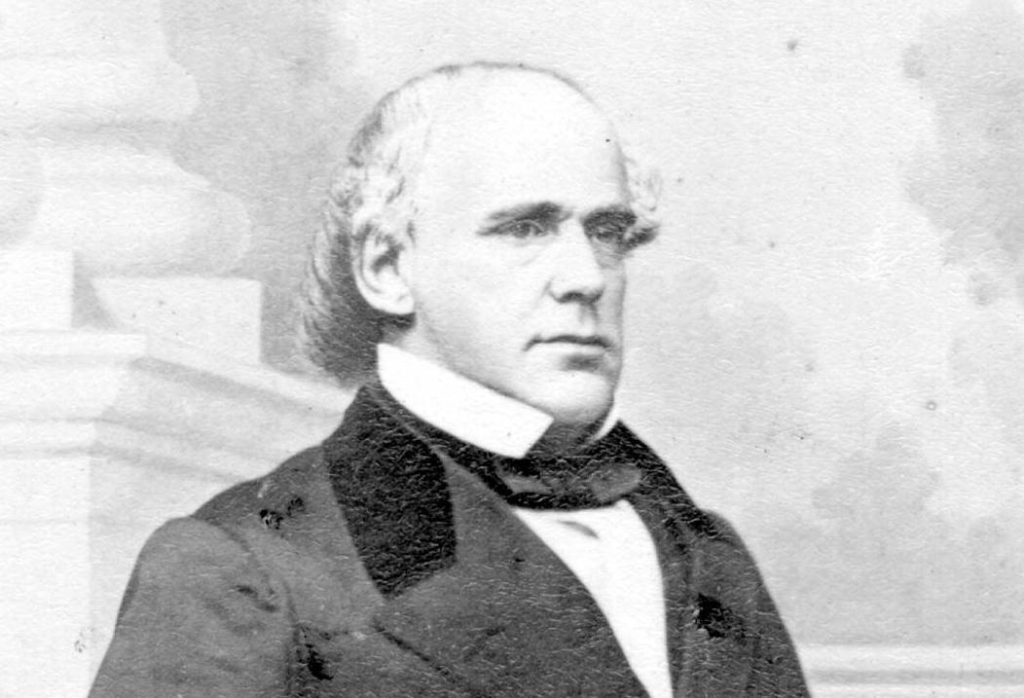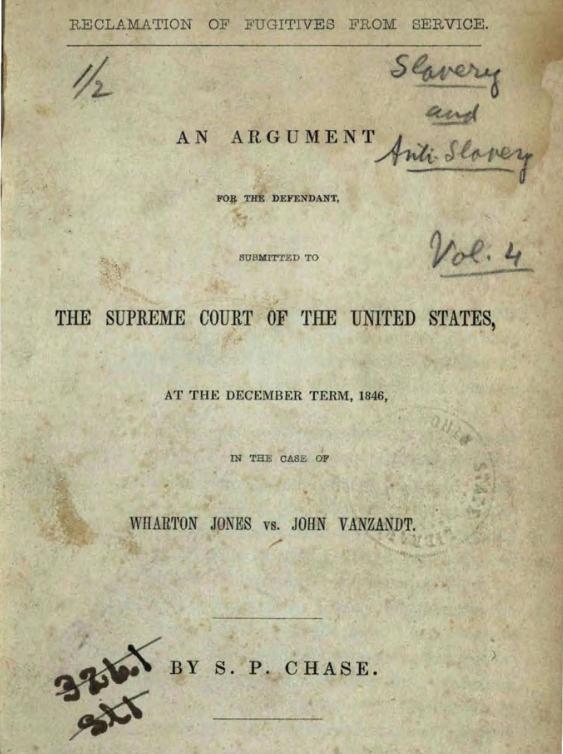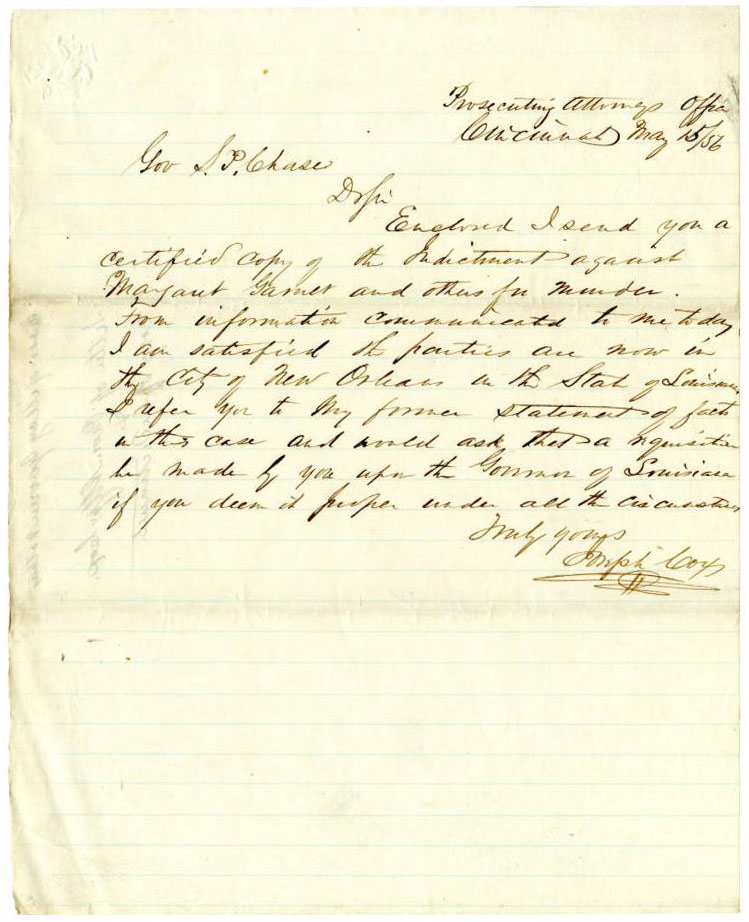The Law of the Land: Chief Justice Salmon P. Chase


With a U.S. Supreme Court nomination in the news recently, this seems like a good time to look at the history of our nation’s highest court. Since the Supreme Court met for the first time in February 1790, ten justices have been either Ohio residents at the time of their appointment, or Ohio natives, including three chief justices: Morrison Waite, William Howard Taft, and Salmon P. Chase, the first Ohioan to become chief justice.
Chase was born in New Hampshire on January 13, 1808. After his mother died when he was young, he came to Ohio to live with his uncle, Episcopal bishop Philander Chase. He attended Cincinnati College and later Dartmouth, but moved back to Ohio in 1830 to practice law in Cincinnati.
Chase was a strong abolitionist, known for defending escaped slaves and those who were arrested for helping them. He argued against the constitutionality of the Fugitive Slave Act before the U.S. Supreme Court in Jones v. Van Zandt (1847), in which a Kentucky slave owner sought compensation from an Ohio abolitionist and Underground Railroad conductor for the cost of recovering escaped slaves. Although Chase argued that Van Zandt could not be found guilty of aiding a fugitive slave because slavery was illegal in Ohio, the court ruled against him and forced Van Zandt to pay damages.

Chase was elected to the U.S. Senate in 1849, where he continued to oppose the Fugitive Slave Act and also fought against the expansion of slavery permitted by the Kansas-Nebraska Act. He then served two terms as Ohio governor from 1856-1860. (You can read Governor Chase’s “State of the State” addresses for 1857, 1858, 1859 and 1860 on Ohio Memory.) He was elected to the Senate again in 1859, but served only two days before resigning to become secretary of the treasury for Abraham Lincoln. In this role he oversaw the creation of a national banking system (which allowed the sale of government bonds to finance the Civil War) and also designed and issued the first U.S. paper currency. The politically ambitious Chase put his own image on the $1 bill so voters would be familiar with his name.
Chase desired high political office; he unsuccessfully sought the Republican presidential nomination in 1856, 1860 and 1864, and would later seek the Democratic nomination in 1868. Chase’s relationship with Lincoln was contentious, and he threatened to resign his cabinet position more than once until Lincoln finally surprised Chase by accepting. However, after former Chief Justice Roger B. Taney died, Lincoln nominated Chase to serve in his place on December 6, 1864. Chase was confirmed by the Senate the same day.
One of Chase’s first acts as chief justice was to admit John Rock as the first African American attorney to argue cases before the Supreme Court. He also presided over the 1868 impeachment trial of Andrew Johnson, and later that same year, confirmed the pardon of former Confederate President Jefferson Davis. Chase served as chief justice until his death in 1873 in New York City.
Thank you to Stephanie Michaels, Research and Catalog Services Librarian at theState Library of Ohio, for this week’s post! Check back in coming weeks to learn more about Ohio’s other chief justices.



Leave a Reply
You must be logged in to post a comment.